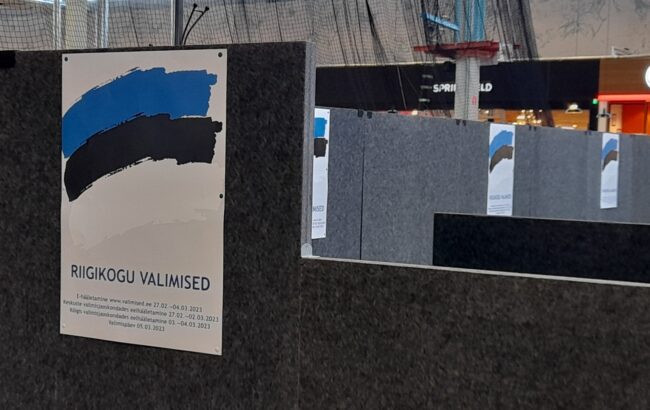Pro-European liberal parties won the Estonian parliamentary elections led by Prime Minister Kaja Kallas’ Reform party – Finn, Joakim Helenius, was 421 votes short of a seat in the Riigikogu
Text Timo Huttunen Photo Evelin Linholm
In the Estonian parliamentary elections held on March 5, former Finnish national Joakim Helenius received 2,000 votes, a significant amount in Estonia. Helenius was a candidate for the Eesti 200 party, which won seats in the Estonian parliament for the first time.
The liberal-right party Eesti 200 has entered the Estonian parliament for the first time. The party gaining 14 representatives in the 101-seat parliament. In the previous parliamentary elections, Eesti 200 failed to cross the five percent vote threshold and was left without parliamentary seats.
The turnout for the election was 63.5 percent, which is roughly the same as the previous election in 2019.
Helenius was a candidate in the Harju and Raplamaa constituency. 15 representatives from the constituency made it to the Riigikogu. The Reform party, which won the election overwhelmingly, got seven seats in the constituency, the right-wing populist party EKRE got three, Eesti 200 got two seats, and the Centre party, Isamaa, and the Social Democrats received one seat each.
If Joakim Helenius had received 421 more votes, he would have passed his own party’s candidate, Toomas Uibo, and been elected to the parliament instead.
In addition, in the constituency, the party was only 1000 votes behind EKRE. EKRE received 15,380 votes and three seats, Eesti 200 got 14,438 votes and two seats. If the votes had been the other way around, Helenius would have made it to the Riigikogu.
Joakim Helenius, who has created a successful career for himself as a businessman in Estonia, changed his citizenship from Finnish to Estonian. This made it possible for him to participate as a candidate in the Estonian parliamentary elections.
In interviews before the elections, Helenius stated that he was primarily interested in the role of Minister of Finance of Estonia.
The current prime minister’s party, which won the election, has all the trump cards in its hands. The Reform party got more than 31 per cent of the votes and 37 seats in the parliament. The party can choose its government partner. Kaja Kallas will continue as Prime Minister. Even a government formed by the Reform party and the Eesti 200 party would get a majority in the Riigikogu. In total, the two parties have 51 seats in the 101-seat parliament.
In the elections, parties supporting the EU and tough sanctions against Russia and supporting Ukraine won the majority of the votes. With voters overwhelmingly supporting Prime Minister Kaja Kallas’s pro-European and anti-Russian policy, as she gained over 31,000 votes, almost three times more than any other candidate in the elections.
During the elections, information was also brought to the media, according to which Russia had used EKRE to spread pro-Russian propaganda. The veracity of the claims has not been proven.
However, the biggest loser of the election was the Centre party, which had been successful in recent years, but lost no less than ten parliamentary seats.
There are several different options when it comes to the coalition government. But in practice, they all require an allegiance with the Reform party. The Reform party already announced before the elections that all other government coalitions are possible except for cooperation with EKRE.
In the elections, the conservative right and populism lost and the liberal parties gained a clear victory.
The parties elected to the Riigikogu in the 2023 elections and the number of seats they received in the parliament are as follows: Reform Party 37 (+3), Ekre 17 (-2), Center Party 16 (-10), Eesti 200 (+14), Social Democrats 9 (-1), Isamaa 8 ( -4).
To learn more about this and similar topicsEesti 200 EKRE Estonian Election Results Estonian Elections 2023 Estonian Parliamentary Elections Estonian Parliament Elections 2023 Reform party Riigikogu 2023










